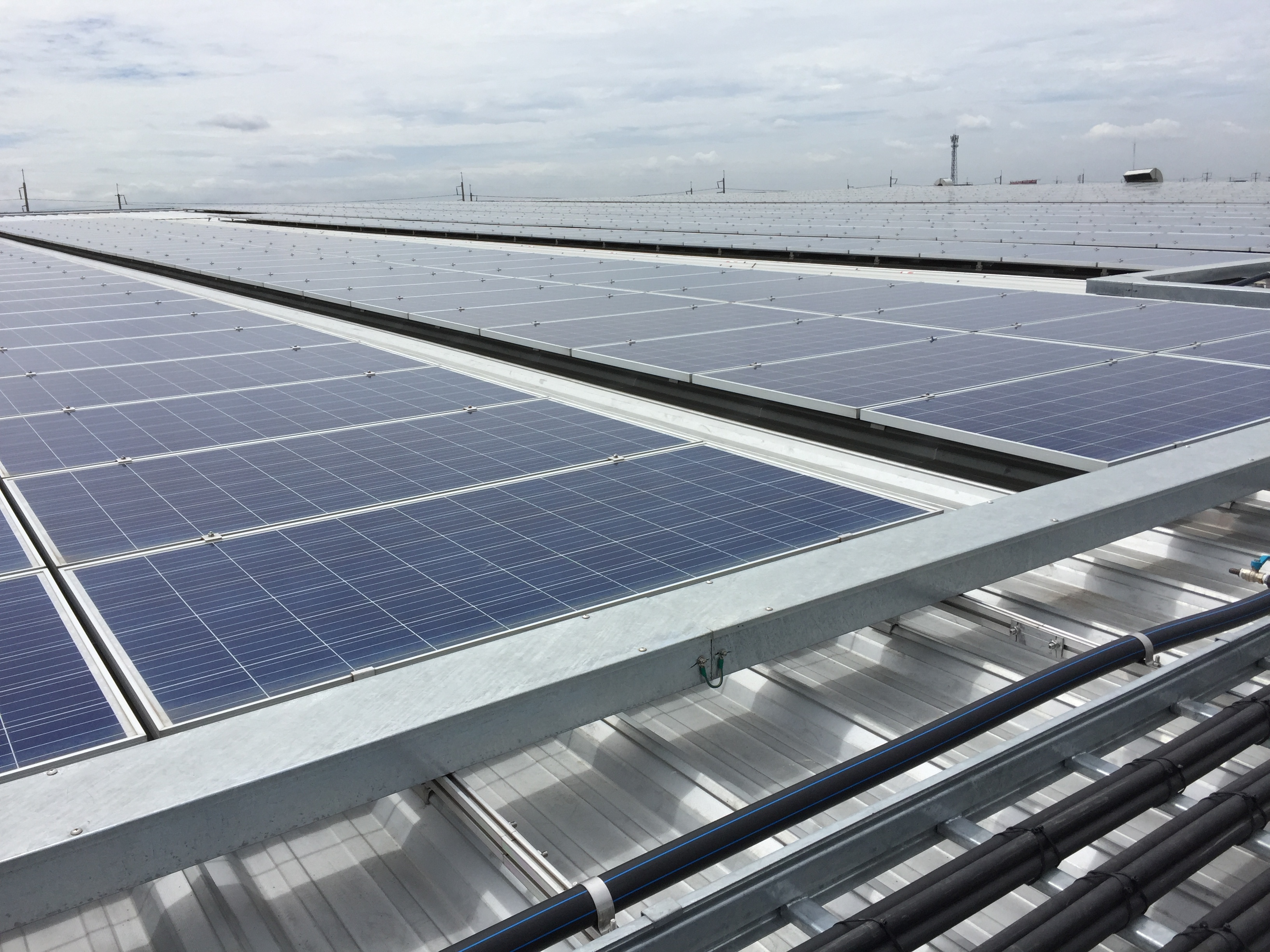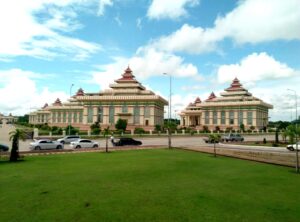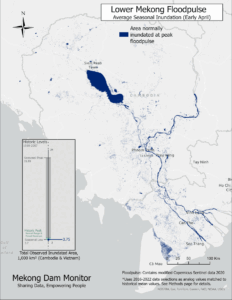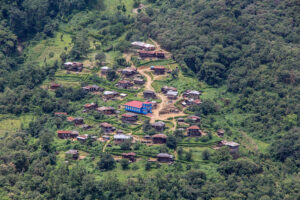Executive Summary
In order to guarantee national energy security, Thailand’s decision-makers have for decades promoted a diverse energy mix which includes imports from neighboring countries. As part of this plan, Thailand has turned to neighboring Laos for power imports via Laos’s Battery of Asia scheme. In 2016, Thailand established an MOU with Lao PDR to purchase electricity from 9,000 MW of generation capacity over the following two decades to help meet Thailand’s energy demand. As of early 2021, Thailand was importing approximately 5,500 MW of electricity from coal and hydropower projects in Laos out of the planned 9,000 MW. Thailand’s Power Development Plan 2018 rev.1 lays out plans to purchase an additional 3,500 MW from unspecified projects through 2037. This rose to 5,720 MW of imports by July 2021 and Thailand has agreed to purchase and additional 1,200 MW of electricity on top of the 9,000 MW.1EGAT, “System Installed Generating Capacity (Latest figure),” EGAT, July 2021, at https://www.egat.co.th/en/information/statistical-data?view=article&layout=edit&id=80; Yuthana Praiwan, “Egat to import more electricity from Laos,” Bangkok Post, August 9, 2021, accessed August 23, 2021 at https://www.bangkokpost.com/business/2162227/egat-to-import-more-electricity-from-laos. Laos is continuing to move forward with a set of proposed dams on the mainstream of the Mekong River which could meet this additional capacity.
The remaining 3,500 MW of power generation committed under Thailand’s MOU with Laos is small when compared against regional plans to build 170,000 MW of generation in coming decades. However, Thailand’s decision about which projects to purchase electricity from will have broad implications for the Mekong’s ecology and the tens of millions of people whose livelihoods depend on it. The Mekong River plays a defining role for mainland Southeast Asia, supplying the world’s richest and most productive freshwater fishery; replenishing nutrients to agricultural land along the river’s banks and on floodplains; and delivering sediment to coastlines along the Mekong Delta. It also provides a key source of electricity to nearly 70 million people living in the river basin and beyond. Hydropower dams make up the majority of projects in Laos which Thailand is considering, but dams disrupt the natural flow of fish, sediment, and nutrients, thereby threatening communities that depend on the Mekong’s food, income, and overall security.
While hydropower was historically the only economically competitive alternative to fossil fuels, the global power market has significantly changed over the last five years. Other renewable energy technologies such as wind and solar PV are now on competitive footing with new fossil fuels and hydropower projects. For example, in Cambodia the purchase price of solar at auction dropped nearly 60% from $0.091/kWh for a pilot project in 2016 to $0.0388/kWh in 2019 at a larger solar park. While solar projects without battery storage do not provide firm generation, grid management and integration approaches adopted in the United States, Europe, and the Global South are supporting higher levels of renewable energy than previously anticipated. The cost of lithium-ion battery storage technologies dropped 87% from 2010 to 2019 and are now commercially viable when paired with new solar or wind generation in some markets.2Bloomberg New Energy Finance, “Battery Pack prices fall as Market Ramps Up with Market Average at $156/kWh in 2019,” BNEF, December 3, 2019, accessed September 24, 2020, at https://about.bnef.com/blog/battery-pack-prices-fall-as-market-ramps-up-with-market-average-at-156-kwh-in-2019/?sf113554299=1.
The current status of the energy system and trends that impact Thailand’s power sector—such as existing excess capacity, increasing domestic deployment of distributed solar, and increasing adoption of electric vehicles and battery storage technologies—suggest that Thailand may not actually need to pursue additional investments and power imports from dams in Laos.
Thailand is currently a major investor in power generation throughout the Mekong region: Thai companies are involved in 60% (6,267 MW) of the existing power generation in Laos and in many planned projects.3Stimson Mekong Infrastructure Tracker, supported by USAID and The Asia Foundation, June 10, 2021, https://www.stimson.org/2020/mekong-infrastructure-tracker-tool/. Laos has limited access to financing on its own, meaning that Thailand influences which power generation projects move forward in Laos by providing direct investment and revenue guarantees in the form of power purchase agreements. Reducing future electricity imports from Lao PDR would be complicated given Thailand’s existing MOU, but the existing excess capacity and market shifts in Thailand provide an opportunity to reconsider the timing and type of electricity that Thailand chooses to import. The excess electricity provides Thai policymakers with time to carefully consider the timing of power imports, how imports from Laos could support rapidly rising domestic renewable energy production, and how power purchases impact goals to work towards carbon neutrality.
This study explores four potential energy scenarios and investment portfolios that Thailand could pursue through power purchases with Laos. Each scenario is informed by the plausible system shocks and energy trends discussed above and potential policy decisions that Thailand might pursue in the near future and is in line with best planning practices in the international energy sector. The scenarios include:
- Scenario 1: Business-as-Usual Scenario, which includes dams on the mainstream of the Mekong currently under consideration by the Ministry of Energy. This scenario is derived from an historical baseline but is becoming increasingly unlikely given rising public pushback and indication from Thai authorities that the potential impacts on communities in Thailand, Laos, and Cambodia make them an unattractive option. However, these projects have not officially been ruled out.
- Scenario 2: Tributary Dam Scenario, wherein Thai decision makers choose to avoid dams on the mainstream of the Mekong due to concerns about social and environmental impacts on Thai communities and instead prioritize purchases from projects on tributaries to the Mekong inside Laos. This scenario prioritizes hydropower under the assumption that Thailand prefers dispatchable electricity but also includes a limited amount of solar imports from Laos.
- Scenario 3: Floating Solar Scenario, wherein Thailand purchases power from floating solar projects built on the reservoirs of dams currently exporting electricity to Thailand via existing transmission lines. This scenario anticipates that Thailand has a successful experience deploying floating solar domestically and chooses to support similar projects in Laos rather than build new dams.
- Scenario 4: Domestic Renewable Energy Scenario, wherein Thailand retains its commitment to purchase 9,000 MW of electricity from Laos but holds off on new power purchases until after the current planning framework ends in 2037. In this scenario the 3,500 MW originally sourced from imports in the Power Development Plan 2018 rev.1 would be replaced with domestic solar PV.
Scenario 1 is most similar to Thailand’s past power purchasing approaches and includes hydropower projects directly suggested by the government of Laos to Thailand in discussions about electricity trade. Recent comments about mainstream Mekong dams from Thailand’s Office of National Water Resources indicate that decision-makers inside Thailand may be rethinking purchases from these projects.4Apinya Wipatayotin, “Thai Govt Threatens to Veto New Lao Dam,” Bangkok Post, 12 Dec. 2020, accessed August 23, 2021, www.bangkokpost.com/thailand/general/2034151/thai-govt-threatens-to-veto-new-lao-dam; Apinya Wipatayotin, “Govt warns over Lao dam plan,” Bangkok Post, Nov. 25, 2020, accessed Aug. 23, 2021, at https://www.bangkokpost.com/thailand/general/2025023/govt-warns-over-lao-dam-plan. The impacts of these four illustrative scenarios are analyzed across a range of key policy, economic, environmental, and social considerations to provide information and strategic insights about the energy development pathways Thai policymakers could choose to pursue. If Thai policymakers incorporate factors such as cost, environmental sustainability, and multi-sector impacts into their decisions to invest in and trade electricity with neighboring countries, Thailand could play a leading role in helping shift Laos towards a more diverse and sustainable development trajectory while also working towards carbon neutrality, meeting Thailand’s commitments under the Paris Agreement, and supporting regional progress towards the sustainable development goals.
Notes
- 1EGAT, “System Installed Generating Capacity (Latest figure),” EGAT, July 2021, at https://www.egat.co.th/en/information/statistical-data?view=article&layout=edit&id=80; Yuthana Praiwan, “Egat to import more electricity from Laos,” Bangkok Post, August 9, 2021, accessed August 23, 2021 at https://www.bangkokpost.com/business/2162227/egat-to-import-more-electricity-from-laos.
- 2Bloomberg New Energy Finance, “Battery Pack prices fall as Market Ramps Up with Market Average at $156/kWh in 2019,” BNEF, December 3, 2019, accessed September 24, 2020, at https://about.bnef.com/blog/battery-pack-prices-fall-as-market-ramps-up-with-market-average-at-156-kwh-in-2019/?sf113554299=1.
- 3Stimson Mekong Infrastructure Tracker, supported by USAID and The Asia Foundation, June 10, 2021, https://www.stimson.org/2020/mekong-infrastructure-tracker-tool/.
- 4Apinya Wipatayotin, “Thai Govt Threatens to Veto New Lao Dam,” Bangkok Post, 12 Dec. 2020, accessed August 23, 2021, www.bangkokpost.com/thailand/general/2034151/thai-govt-threatens-to-veto-new-lao-dam; Apinya Wipatayotin, “Govt warns over Lao dam plan,” Bangkok Post, Nov. 25, 2020, accessed Aug. 23, 2021, at https://www.bangkokpost.com/thailand/general/2025023/govt-warns-over-lao-dam-plan.




